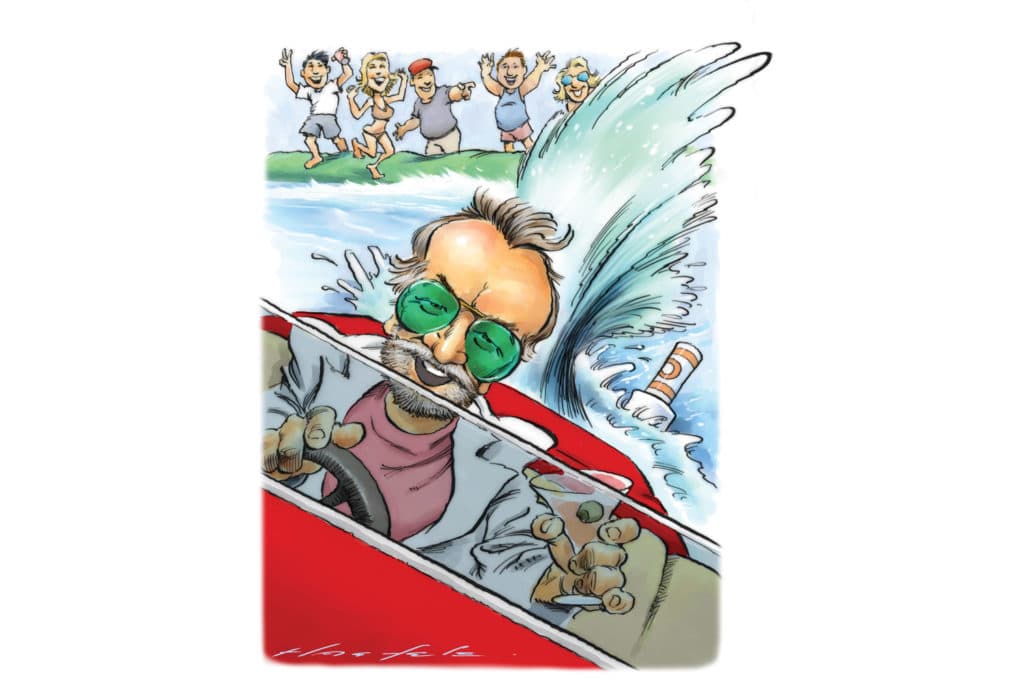
Now what’s the purpose of that damn thing?” my pal Ed groused. That damn thing was a 100-foot high-speed yacht burping up a rooster tail the size of Niagara Falls as it careened down the waterway.
“The afterdeck is a bed,” he said. “It’s completely impractical.”
“It doesn’t matter,” I replied as the Miami Vice theme song echoed in my head.
I penned a high-speed ride nearly as large as that boat in the 1980s and was summarily taunted by my peers for “going Euro.” European chic was not so popular stateside back then. Members of the Greatest Generation were still moving the market, and they were driving traditional U.S. brands at low velocities.
“Tasteless,” Ed insisted as he considered the yellowed print of my design. “It looks like a suppository.”
“It seems it’s not the design that is dated, my friend. You are,” I scolded.
In fact, had my design made it to the water, she would seem rather common by today’s standards. Her interior specification called for a herd of Italian leather, a flock of ostrich hide, buckets of lacquer, and tightly woven sisal and wool ground cover. Proper yachts had white topsides in the 1980s, but hers were to be bathed with color: an annoying shade of red, as I recall, or was it yellow? She was aggressively rakish. Her design brief demanded that she look as though she were moving at flank speed while tethered alongside trendy dockside drinking holes.
These days, supersize speedboat technology has been pretty well sorted out. Back then, such a design was pushing the envelope. I infused my effort with high-speed, patrol-boat DNA with the help of a D.C. Beltway subcontractor. Her scantlings called for a tough, longitudinally framed aluminum hull and a lightweight, cored composite deck and superstructure. A pair of 16-cylinder diesels pumping hundreds of gallons per hour would have yielded 50 knots, and surface-piercing props would have provided the maximum visual effect.
Designer shades, white-linen threads and lace leather slippers—those were the days.
“What’s old is new, Ed,” I said. “If I enclose the bridge, add a few winglets and a playpen on the afterdeck, and swaddle the lot in tinted glass, this design will be ready for prime time.”
“A serious yachtsman would never cruise aboard such a boat,” Ed grunted in disgust.
“Cruise? How mundane. There’s much more to it than that,” I insisted. “Today’s savvy, style-conscious investor in yachts is a patron of the arts and sciences. These forward thinkers are not wafting through their retirement aboard a trawler at idle speed. They’re charging ahead, spawning exciting new innovations in design and performance. They are making a statement.”
“What happened to your patron of the arts and sciences? Did he ever make a statement?” Ed asked.
“My client had to spend time ashore,” I explained. “The market was different in the 1980s. Fast-boat fans were more likely to be giving statements than making them. You do recall Crockett and Tubbs?”








